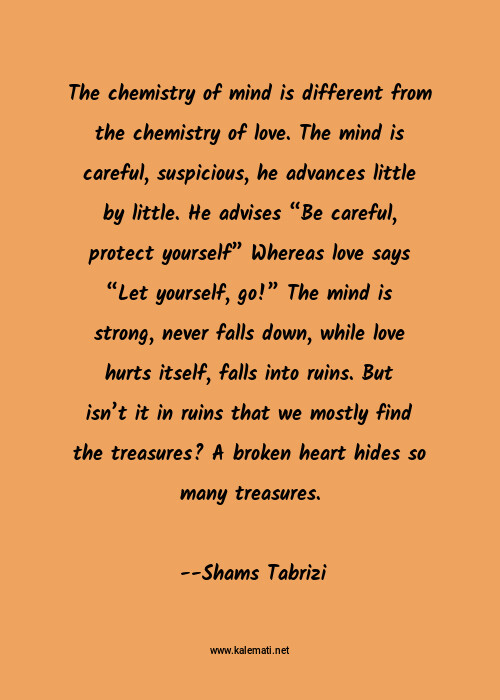

Among the more prominent themes in the Divan are those of love and longing. Themes Īlthough the Divan is, in contrast to Rumi's Masnavi, not a didactic work, it is still a deeply philosophical work, expressing Rumi’s mystical Sufi theology. In 1957, Foruzanfar published a critical collection of the Divan’s poems based upon manuscripts written within a hundred years of Rumi’s death. Nicholson produced a more selective text of fifty ghazals from the Divan, although Badi al-Zaman Foruzanfar’s critical edition has since determined several of Nicholson’s selections to have been inauthentic. The first printed copy of the Divan was made in Europe in 1838 by Vincenz von Rosenzweig-Schwannau, who printed seventy-five poems of dubious authenticity. Turkish editions, however, follow the practice of the Mevlevi Order and group the poems by metre. This method for arranging lyrical poems in the Divan is still used in modern Iranian editions of the Divan. īy the sixteenth century, most editors organized the poems in the Divan by alphabetical order according to the last letter of each line, disregarding the varying meters and topics of the poems.

Rumi dedicated these poems to his friend Salah al-Din Zarkub, who passed away in December, 1258. Another seventy poems in the Divan were written after Rumi had confirmed that Shams was dead. and the years that followed until Rumi had overcome his grief over the loss of Shams. Therefore, most of the poems probably date from around 1247 C.E. However, a major portion of the Divan’s poems were written in the initial aftermath of Sham’s second disappearance. The creation dates of some of the poems in the Divan are unknown. These poems would be collected after Rumi’s death by his students as the Divan-i Shams-i Tabrizi. Following Sham’s second disappearance, Rumi returned to writing poetry lauding Shams and lamenting his disappearance. During Sham’s initial separation from Rumi, Rumi wrote poetic letters to Shams pleading for his return. Shams abruptly left Konya in 1246 C.E, returned a year later, then vanished again in 1248 C.E, possibly having been murdered. Rumi, who previously had no background in poetics, quickly became attached to Shams, who acted as a spiritual teacher to Rumi and introduced him to music, sung poetry, and dance through Sufi samas. In 1244 C.E, Rumi, then a jurist and spiritual counselor working at the behest of the Seljuk Sultan of Rûm, met a wandering Persian Sufi dervish named Shams-i Tabrizi in Konya. Pages from a 1366 manuscript of the Divan-i Shams-i Tabrizi in the Mevlâna mausoleum, Konya, Turkey Rumi evidently found the traditional metrical constraints of ghazals to be constraining, lamenting in one ghazal that fitting his poems into the traditional “dum-ta-ta-dum” ghazal metre was a process so dreadful that it killed him.
#Who is shams tabrizi professional
Notably, due to the extemporaneous manner in which Rumi composed his poems, much of Rumi’s poetry has an ecstatic, almost trance-like style that differs from the works of other professional Islamic poets. Though belonging to the long tradition of Sufi poetry, Rumi developed his own unique style. Rumi signed off most of his own ghazals as either Khâmush (Silence) or Shams-i Tabrizi. By convention, poets writing ghazals often adopted poetic personas which they then invoked as noms de plume at the end of their poems, in what are called takhallos. Most of the poems in the Divan follow the form of a ghazal, a type of lyric poem often used to express themes of love and friendship as well as more mystical Sufi theological subjects. Although most of the poems are written in Persian, there are also some in Arabic, as well as some bilingual poems written in Turkish, Arabic, and Greek.

It contains 44,292 lines (according to Foruzanfar's edition, which is based on the oldest manuscripts available) 3,229 ghazals in fifty-five different metres (34,662) 44 tarji-bands (1,698 lines) and 1,983 quatrains (7,932 lines). The Divan contains poems in several different Eastern-Islamic poetic styles (e.g.


 0 kommentar(er)
0 kommentar(er)
